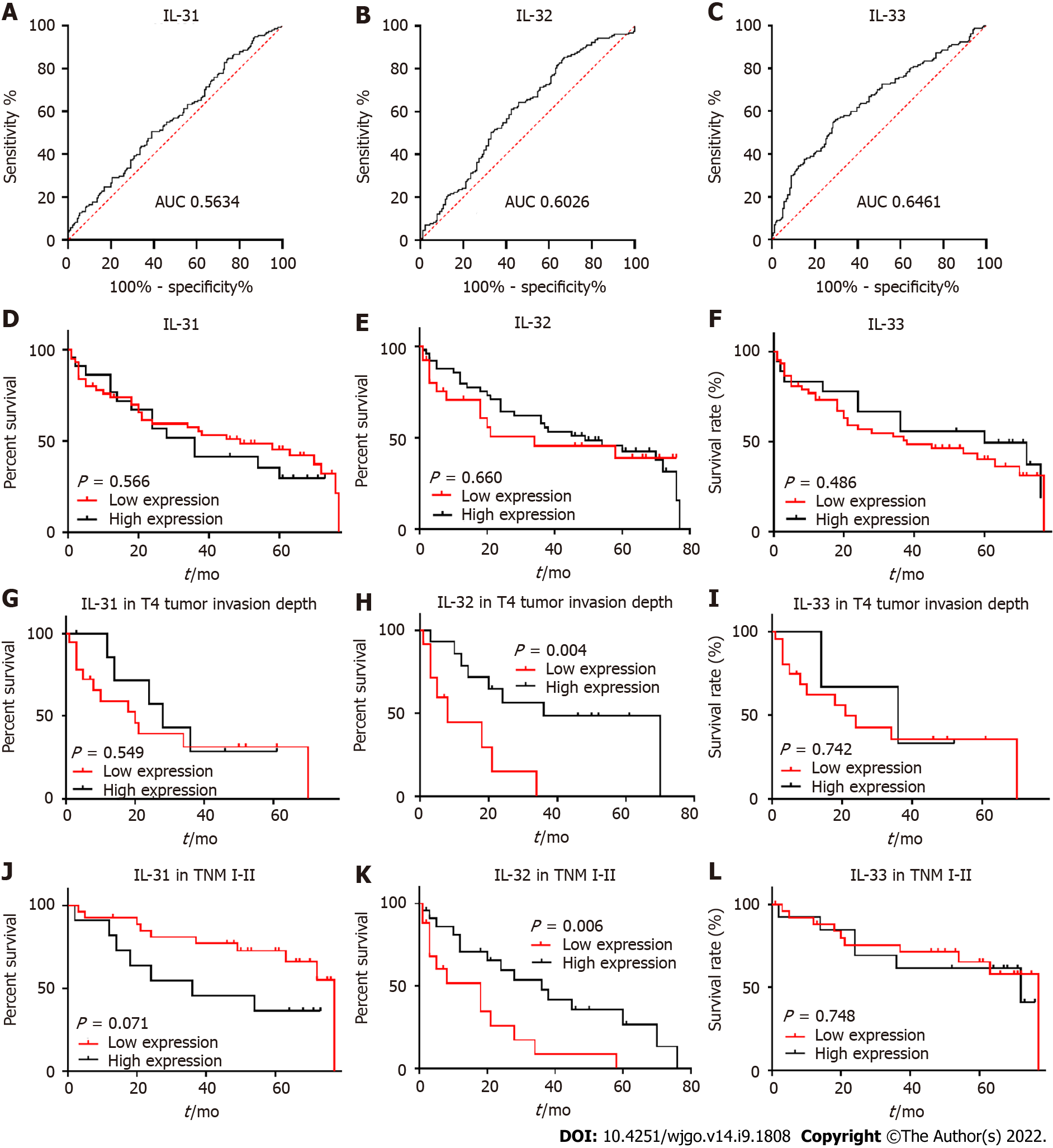Copyright
©The Author(s) 2022.
World J Gastrointest Oncol. Sep 15, 2022; 14(9): 1808-1822
Published online Sep 15, 2022. doi: 10.4251/wjgo.v14.i9.1808
Published online Sep 15, 2022. doi: 10.4251/wjgo.v14.i9.1808
Figure 5 Receiver operating characteristic curves, correlation of interleukin-31, interleukin-32, and interleukin-33 with prognosis of gastric cancer, and subgroup analysis for patients at T4 stage and TNM stage I-II.
A-C: The specificity (X-axis) vs sensitivity (Y-axis) of interleukin (IL)-31 (A), IL-32 (B), and IL-33 (C); D-F: Comparison of 5-year survival rate between patients with high and low IL-31 (D), IL-32 (E), and IL-33 (F) expression; G-I: Comparison of 5-year survival rate between patients with high and low IL-31 (G), IL-32 (H), and IL-33 (I) expression in the T4 subgroup; J-L: Comparison of 5-year survival rate between patients with high and low IL-31 (J), IL-32 (K), abd IL-33 (L) expression in the TNM stage 2 subgroup. ROC curves analysis displayed the poor diagnostic potential of IL-31, IL-32, and IL-33 expression for GC. The cut-off point and area under the curve were: IL-31: 1.486 × 106, area under the curve (AUC) = 0.563; IL-32: 64893, AUC = 0.603; IL-33: 166291, AUC = 0.646. Kaplan-Meier survival analysis of GC patients showed that decreased IL-32 expression correlated with a poor survival of GC patients in the T4 and TNM I-II subgroups. IL: Interleukin; AUC: Area under the curve.
- Citation: Liu QH, Zhang JW, Xia L, Wise SG, Hambly BD, Tao K, Bao SS. Clinical implications of interleukins-31, 32, and 33 in gastric cancer. World J Gastrointest Oncol 2022; 14(9): 1808-1822
- URL: https://www.wjgnet.com/1948-5204/full/v14/i9/1808.htm
- DOI: https://dx.doi.org/10.4251/wjgo.v14.i9.1808









